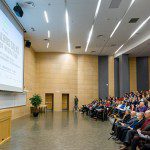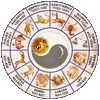Off the Rails
Prue Hemelrijk and the golden age of fact-checking—and why magazines will never see such rigour again
Prue Hemelrijk sits at her desk on her first day at The Canadian, a national general interest magazine. She’s unsure what’s in store for her as editor Harry Bruce, carrying a manuscript, makes his way toward her. He sets it on her desk and says, “We need to do something called fact-checking. Do you know what that is?”
She has no idea.
“I think they check the facts,” says Bruce.
Hemelrijk takes the manuscript and starts going through it line-by-line, underlining everything that looks like a fact. Then, in the margins, she notes where she thinks the information came from in her neat, economical writing and starts making calls.
Soon she is a pro, catching errors and sparring with writers over corrections. Earl McRae is in his office at the magazine when Hemelrijk comes to see him about a profile he wrote on a retired athlete. She has his manuscript in her hand and he can see all sorts of scribblings in the margin. “Oh God,” he thinks. “What the hell?”
“Earl, he says his stomach is not fat,” Hemelrijk says. “When he sits down it appears fat, but when he stands and is walking, his stomach is not fat.”
“Yes, he has a fat stomach. I was there; I saw him.”
“He says that when he stands his stomach is not fat,” she responds patiently. “It was just the way he was sitting.”
That tenacity, which McRae can now laugh about, helped Hemelrijk earn the respect of Canada’s top journalists and become the first-ever winner of a National Magazine Award (NMA) for Outstanding Achievement in 1990.
The practice of checking is straightforward: Researchers go through a story and identify every fact. They then conduct interviews with sources, examine documents and do whatever else is necessary to confirm everything in the piece. “I think fact-checking’s terribly important,” says Hemelrijk. “It drives me crazy when I read things and they are not accurate. I think, ‘That is not right. Why didn’t they take the trouble to find out?’”
But after setting the standard for rigorous fact-checking, she said goodbye to the craft 13 years ago. Since then, the magazine industry has gradually followed, jeopardizing the accuracy that gives long-form journalism its credibility.
* * *
Hemelrijk was born in Liverpool, England in 1927 to a wealthy family in the cotton business. Nannies cared for her and her siblings in their childhood home, which had a separate nursery wing. But in 1932, her family lost its fortune after the cotton market crashed and she lived hand-to-mouth for the next several years. Eventually, the family got back on its feet and she was able to study piano at the Royal Academy of Music in London. At 28, she began working for the Arts Council of Great Britain. Close to the Arts Council were a number of shipping company offices, and she would often pass by at lunchtime, wondering what it would be like to take a trip by sea. So in 1956, at the age of 29, Hemelrijk quit her job and boarded an ocean liner headed for Canada. She landed in Montreal and made her way to Toronto where, through connections, she got a job as an editorial assistant at Maclean’s. She moved to Chatelaine a year later. In 1959, she returned to England, but five-and-a-half years and a broken engagement later, she settled back in Toronto. In 1966, she started working at The Canadian. Distributed on Saturdays in 13 newspapers across the country, it had a circulation of nearly two million.
Bruce, who hired Hemelrijk, remembers being struck by her intelligence and proper manners. Then, when she started fact-checking, he was impressed with her knack for isolating what needed to be verified. “Some checkers would be so literal that they were kind of missing the point. For instance, a writer might make an extreme exaggeration as a joke. A checker might think that was a mistake. But not Prue,” says Bruce. “She was not just smart—she was smart enough that you could trust her absolutely.” David Cobb, a managing editor at The Canadian, recalls her strong will. “When she got in her head that something was wrong, you better change it or accept the fact that she was going to change it instead.” Hemelrijk attributes this to “a terrible eye for detail” and admits, “Anything that looks even slightly shady I say, ‘Wait a minute, there’s something wrong here,’ and sit with it until I get it. It’s the kind of silly thing I excelled at.”
Hemelrijk may call it silly now, but there was a time when that skill was highly sought after. Time first introduced fact-checking after it was founded in 1923. The New Yorker did the same in 1927 after mistakes began appearing in its pages. A profile of poet Edna St. Vincent Millay, for example, incorrectly stated her father’s profession (he was a school teacher, not a stevedore) and said her mother’s memory was weak. Millay’s mother wrote a letter chastising the publication for not verifying the information and listing other inaccuracies in the piece. After this embarrassment, The New Yorker famously built one of the most scrupulous fact-checking departments in the magazine industry—a department for which Hemelrijk says she aspired to work.
Initially, editors and publishers saw checking as work suitable for intelligent women—but not men—and didn’t consider it as important as writing or editing. Time’s fact-checkers were bright, young females from well-respected families who had graduated from the right schools. Over time, this “women’s work” became a staple at magazines throughout Canada and the United States.
Not everyone welcomed that. Some writers, including McRae, saw checking as a nuisance. Although fond of Hemelrijk, he’d sneak into the copy department’s offices at The Canadian to see what notes the checker had made on his manuscript. “I felt that fact-checkers could sometimes be a little too precise, a little too anal. If you’re writing, you’re being creative at times,” he says. Now a columnist for the Ottawa Sun, McRae admits the practice can come in handy with details such as the spellings of names and places, but believes the writer’s research and observations need to be trusted. He doesn’t think it’s fair to always take the source’s word over the writer’s after a fact-checking call.
But even the best journalists can be fooled. When Paul Grescoe, a writer for The Canadian, submitted his story about a 70-year-old running superstar, he had no reason to think anything was amiss. He’d been in the man’s home, had seen all his trophies and had spent ample time interviewing him. After all this, Grescoe and his editors were stunned when letters started rolling in from the organizations that ran the events the man claimed to have won. As it turned out, they had never heard of him—he made it all up. Editor Dennis Harvey, who didn’t believe in fact-checking, had earlier reassigned the magazine’s checkers to new duties. If only checkers had called the race organizers to confirm the man’s story—a relatively quick process—the magazine could have avoided embarrassment. When Harvey moved on, his successor, Michael Hanlon, reinstated them.
Hemelrijk stayed at The Canadian until 1977. She then left for The City, where she first met writer D.B. Scott. “Prue was a kind and courtly person, but she was relentless,” he recalls. “The conversation would start, ‘Oh, good morning, sir. I have a few teeny, tiny questions,’ and 40 minutes later you were still on the phone with the blood running out of your ears because she had so carefully taken the story apart.” Hemelrijk enjoyed deconstructing each story, fact by fact. “If you were feeling vindictive against somebody and they got something wrong you’d think, ‘Ha! Got ’em!’”
When The City, which was owned by Torstar, folded in 1980, Hemelrijk and the rest of the staff interviewed for other positions within the company’s empire. One after another, they returned from the interviews with bad news. Then it was Hemelrijk’s turn. While she was waiting, one of the bosses saw her and said, “Oh hi, Prue. You surely didn’t think we were going to let you go, did you?”
But she lasted just four months as copy editor for Starweek, a TV magazine, before she got fed up with the pointless gossip. When she told the editor she was quitting, he said, “I’m surprised you lasted this long.”
Hemelrijk went freelance in May 1980, working for the Toronto Star, Toronto Life, Saturday Night, enRoute,Canadian Art and Financial Post Magazine. Later, it was during her stint at the short-lived Vista, a flashy business magazine, that she made her most memorable mistake: The cover line on an issue with a Hong Kong package read “Hong Hong.” No one caught the error in editorial and it got all the way to the art department. She made photocopies and stuck them on the walls of the copy department as a cruel reminder to herself and her colleagues.
* * *
After 32 years of checking the facts, Hemelrijk retired in 1997 at the age of 70. Her departure coincided with a shift away from a commitment to meticulous fact-checking in the Canadian magazine industry. When Ken Whyte became editor of the now-defunct Saturday Night in 1994, he slashed the in-house fact-checking department in half and relied on freelancers to pick up the slack. Three years later, Canadian Businessswitched from a monthly to a twice-monthly production schedule and introduced a lighter checking system to keep up with the increased frequency. Editors flagged what they felt needed to be checked; everything else went virtually unchecked. After a few weeks, the magazine reverted back to its full checking policy. ButMaclean’s made similar cuts to its fact-checking department when Whyte became editor and publisher in 2005. Now that he’s publisher of CB, that magazine, too, has slashed its fact-checking department. Managing editor Conan Tobias says the cuts were to save costs; Whyte did not return calls seeking comment. CB now only checks pieces written by freelance writers or particularly contentious or number-heavy stories. Staff writers are expected to be extra diligent in their reporting and to check their own work. “We’re no less committed to accuracy, but the writer is more responsible for it now,” says Tobias. “Writers make mistakes and checkers make mistakes too. It’s never going to be 100 percent accurate, no matter what you do. No publication is 100 percent accurate.”
Pat Ireland was one of the checkers let go in the most recent CB restructuring. A checker for over 25 years and with the magazine for 20, she feels the cuts will be detrimental to the publication. “It makes a lot more sense to check [business magazines] because the people who read them know what you’re talking about. If you get numbers wrong, if you get something foolish wrong, it just stands out.” It also erodes reader confidence—a huge setback for any magazine.
Another blow to the tradition has been an increasing reliance on interns. Some magazines, includingChatelaine and Toronto Life, use interns who are trained and closely monitored. Both have staff checkers who vet their work and handle challenging pieces. Linda Besner didn’t know what fact-checking was when she started interning at The Walrus in 2008, but she had to learn fast: She started checking everything from sidebars to major features after receiving a tutorial from managing editor Jared Bland on her first day. AtMore magazine, copy editor Brenda Thompson oversees interns. She starts them off with back-of-book pieces or shorter features and they work their way up to more complex stories.
The reliance on unpaid or under-trained staff can be detrimental to a magazine’s credibility, says Craig Silverman, author of Regret the Error: How Media Mistakes Pollute the Press and Imperil Free Speech. “It defies logic to say that eliminating an entire phase of quality control will not degrade the quality of your work,” he says, adding that fact-checking is an integral part of the journalistic process, just as reporting and editing are. He thinks employing people with little or no experience is not ideal. “It makes an organization feel like it’s doing some checking. When it comes to what is worth investing in, fact-checking is absolutely seen as second class.”
More than credibility is at stake. Brian MacLeod Rogers, a lawyer who specializes in media law and litigation, says fact-checking is often one of the few tools a magazine has to protect itself in libel suits. Under a recent Supreme Court of Canada ruling, a publication can protect itself by proving it took thorough measures to ensure the accuracy of a piece. And magazines that do light checks or rely on interns diminish the protection fact-checking provides. Rogers says interns don’t make the best witnesses in libel cases and an experienced and respected fact-checker has more authority. Although only a fraction of defamation suits in Canada actually make it to trial, mistakes can still have serious legal and financial repercussions for a publication.
* * *
When it came time to choose a winner for the inaugural NMA for Outstanding Achievement, there was no question in the judges’ minds the winner should be Hemelrijk. David Olive, now a columnist with the Star, was president of the NMAs in 1990 and wanted to honour someone who rarely enjoyed the limelight. Don Obe, an editor at The Canadian in the 1970s, says, “She got the award not only for her own accomplishments, but for what she represented, working in the trenches.”
The award came as a shock to Hemelrijk. When Olive called to deliver the news, he first asked, “Are you sitting down?” Her immediate response was, “The committee must’ve been drunk.”
A week before the NMA banquet in 1990, Hemelrijk fell on a slippery road, tipsy from a late-night dinner with photographer Bert Bell on the day Vista folded. The accident left her with a bad hip injury. Although her colleagues wanted to carry her to the awards, the doctors would not have it, so Barbara Sutton, managing editor of City & Country Home at the time, read her speech: “I’d like to share the award with all those other equally dedicated and devoted, accurate and precise, tenacious and tactful, punctilious and perfect—are we running out of adjectives?—copy editors, proofreaders and fact-checkers across the country who have toiled, are still toiling and will continue to toil in the background at what some might regard as a thankless job.”
Hemelrijk moved to Victoria in 1998, relocating for the better weather conditions and what she considered an agreeable cost of living. The 83-year-old is cheerful as ever, with her proper British accent and collegial nature. She spends her days practising the cello (which she took up at age 79), playing in a small orchestra and socializing with her friends from the Victoria Women’s Newcomers Club. This winter she had a marathon celebration for her birthday that lasted several days. (And, every year, she throws her beloved Paddington Bear doll its own birthday party. The parties are sometimes catered with fine food, lots of wine and, of course, a birthday cake. Hemelrijk says her 36-year-old Paddington is a big part of her life. She bought it in 1974 and had it customized to her specifications—blue hat and coat, and size four children’s boots.)
She no longer does any fact-checking or copy editing. “When I moved to Victoria, I thought, that’s it. Goodbye.” And goodbye it was. A self-professed workhorse, Hemelrijk started checking by chance and continued because editors recognized her skill. She also got an undeniable thrill from the chase. “I found it rather fun. It was like detective work.” She believes that accuracy is vital to the magazine industry.
“People read things and they think it’s gospel truth,” she says, “and if it isn’t gospel truth then it’s sad.”
A nun who tended to her in the rehabilitation centre after her hip injury called her an independent perfectionist. “That’s me,” says Hemelrijk. “If I ever have a grave, I’d put that on my grave.” (The facts are, though: She wants to be cremated and have her ashes scattered in the sea.)














